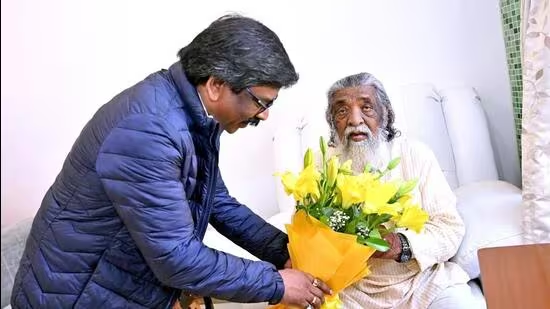Introduction: A Historic Win for the JMM-Led Alliance
As the sun rose over Jharkhand on a crisp November morning, the air was thick with anticipation. The Jharkhand Mukti Morcha (JMM)-led alliance was on the brink of a historic victory, leading in 57 of the 81 seats in the state’s Assembly election results. This triumph was not just a political win; it was a testament to the people’s trust and hope for a brighter future.
The Dawn of a New Era
The JMM, a party deeply rooted in the state’s history and struggles, was leading in 33 seats. The Congress, a stalwart in Indian politics, was ahead in 17 constituencies, while the Rashtriya Janata Dal (RJD) held strong in five. The Communist Party of India (Marxist-Leninist) (Liberation) was making its presence felt with leads in two seats.
On the other side, the Bharatiya Janata Party (BJP) had taken a lead in 21 seats by 2:40 pm. Its alliance partners, the Janata Dal (United) and Lok Janshakti Party (Ram Vilas), were ahead in one seat each. The All Jharkhand Students Union (AJSU) Party, however, had no leads, reflecting a challenging election for them.
The Journey to Victory
The counting of votes for the Jharkhand Assembly election began at 8 am on Saturday. This process would determine the formation of the state’s sixth Legislative Assembly, comprising 81 seats. A party or alliance requires 41 seats to form the government, and the JMM-led alliance was well on its way to surpassing this mark.
The polls, held in two phases on November 13 and November 20, saw a voter turnout of 67.74%. This high participation reflected the citizens’ eagerness to shape their state’s future.
The Coalition’s Strategy
The JMM, Congress, RJD, and Left parties contested the Assembly elections in a united front. The JMM was in the fray from 43 seats, the Congress from 30, the RJD from six, and the Left parties from the remaining three. This coalition aimed to bring comprehensive development and address the state’s pressing issues.
The BJP contested 68 out of the 81 seats, while its ally, the AJSU Party, fought in 10 constituencies. Bihar Chief Minister Nitish Kumar’s Janata Dal (United) contested from two constituencies, and Union minister Chirag Paswan’s Lok Janshakti Party faction fought from one seat as part of the BJP-led National Democratic Alliance.
Reflecting on the Past
The 2019 Jharkhand Assembly elections saw the JMM-Congress-RJD alliance winning 47 out of 81 seats. The JMM emerged as the largest party with 30 seats, and Hemant Soren became the chief minister. The Congress won 16 seats, and the RJD secured one.
The BJP, led by Chief Minister Raghubar Das, managed to win only 25 seats. Das lost his own constituency of Jamshedpur East to BJP rebel Saryu Roy, marking a significant shift in the state’s political landscape.
The Current Scenario
This year, exit polls predicted a close contest. The BJP-led National Democratic Alliance was tipped to win 39 seats, while the INDIA bloc led by the JMM coalition was predicted to win 38 seats. This suggested that neither coalition might reach the halfway mark of 41 needed to form the government.
Some of the key battles included Chief Minister Hemant Soren versus the BJP’s Gamaliel Hembrom in Barhait, and Kalpana Soren, the chief minister’s wife, against the BJP’s Muniya Devi in Gandey. Former Chief Minister Champai Soren, who defected to the BJP, was contesting from Seraikella against the JMM’s Ganesh Mahali.
Conclusion: A New Chapter for Jharkhand
As the votes are counted and the results unfold, the JMM-led alliance’s potential victory marks a new chapter for Jharkhand. This election is not just about numbers; it’s about the hopes and dreams of millions who believe in a better tomorrow. With the JMM-led alliance poised for a landslide victory, the future of Jharkhand looks promising and filled with possibilities.



